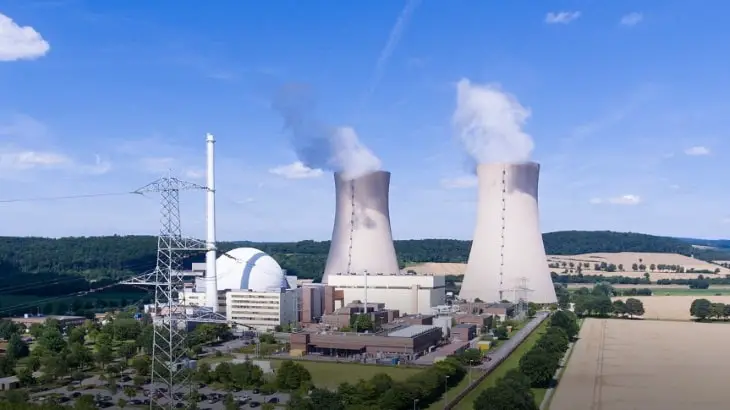During the tenure of former South Korean President Moon Jae-in, he postponed the nuclear power plan and vowed to get rid of nuclear energy, but the situation is different.
Now, under the energy crisis, the new South Korean government is preparing to restart the nuclear power industry. In addition to increasing the proportion of nuclear energy in the country’s electricity consumption, it also Build nuclear power plants in other countries.
South Korea currently accounts for about 27 percent of the country’s electricity mix from nuclear power , 35 percent from coal and 29 percent from liquefied natural gas . In the net-zero scenario announced by South Korea during the Moon Jae-in administration, it is expected that in 2050 , nuclear power demand will only be 6.1~7.2% , and the proportion of renewable energy will be greatly increased to up to 70%.
But quitting nuclear power, and getting rid of fossil fuels, is fatal to South Korea’s economy, not only causing losses to utilities, but also rendering South Korea’s expertise in building nuclear power plants useless.

According to the International Atomic Energy Agency (IEA), South Korea is the fifth-largest nuclear power country after the United States, China, France and Russia.
South Korea’s new president, Yoon Seok-wyeh, has promised to restart delayed construction of new nuclear power plants, extend the life of nuclear power plants, increase the contribution rate of nuclear power to 30% , and export 10 nuclear power plants by 2030 .
Proponents argue that nuclear energy plays an important role in providing low-cost electricity 24 hours a day, especially in key South Korean industries such as semiconductors.
Nuclear power cost 61.5 won per kilowatt-hour in January , while solar cost 149.9 won, according to the Korea Electric Power Exchange .
If South Korea maintains Moon Jae-in’s nuclear phase-out plan, as well as its current decarbonization policy, electricity costs could be five times higher than current levels by 2050 , a rise in electricity costs that South Korea’s presidential transition council believes could hurt the South Korean economy.
Electricity costs remain a key advantage for companies such as Samsung Electronics and SK Hynix. A single power failure can result in hundreds of millions of dollars in lost wafers or even an interruption in the global supply of wafers.
The South Korean technology industry is also considering investing in new technology nuclear power plants. South Korea ‘s SK Group said this week it was considering investing in small nuclear power plants, with one candidate being TerraPower , an American company founded by Bill Gates .
SK Group pledged last year to reduce carbon emissions by 200 million tons by 2030 , about 1 percent of the global carbon reduction target of 21 billion tons by 2030 .
South Korea Plans to cut emissions by 40 percent by 2030
South Korea has vowed to be climate neutral by 2050 under the Green New Deal and plans to cut emissions by 40 percent from 2018 levels by 2030 . The South Korean government has also included advanced technologies, including small modular nuclear power plants, in its net-zero emissions roadmap and strengthened ties with major economies, including the United States, on climate issues.
The Ukrainian crisis has highlighted the risk of over-reliance on oil and gas imports, and the increased likelihood that the EU will include nuclear power in its sustainable carbon neutrality goals has revived the issue of nuclear power. category.
Even if the energy structure is rethought, the political changes are too great, the President of South Korea is elected for five years each, and the policy uncertainty is too high. It is difficult for the nuclear power industry, which relies on long-term investment and commitment, to resume prosperity soon.




